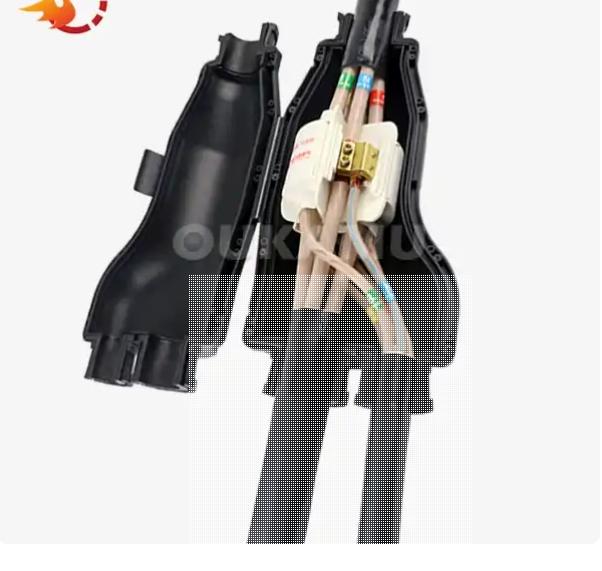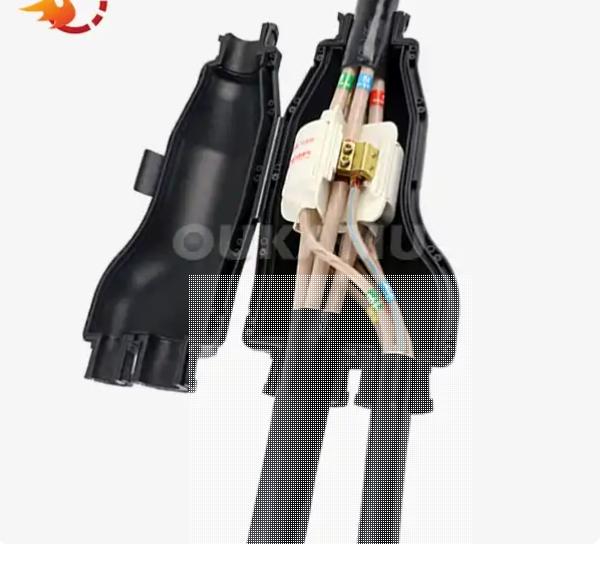Branch cables are crucial components in any electrical system, responsible for distributing power from the main electrical source to various outlets, devices, or other systems. As essential as they are, branch cables are often overlooked when it comes to maintenance, which can lead to costly repairs and safety risks. Whether you're a homeowner, a business owner, or a facility manager, understanding best practices for branch cable maintenance can significantly enhance the longevity and safety of your electrical systems.
In this blog, we will explore the best practices for maintaining your branch cables to ensure they remain safe, efficient, and reliable. By following these simple steps, you can avoid the common pitfalls associated with branch cable failures, such as overheating, voltage drops, and physical damage. Let’s dive into the details.

1. How Can You Prevent Overheating in Branch Cables?
Overheating is one of the most serious issues that branch cables can face. Not only does it reduce the lifespan of the cable, but it also poses a significant fire hazard. In fact, overheating is a leading cause of electrical fires, which can cause damage to both property and human life.
Common Causes of Overheating
- Undersized Cable: A branch cable that is too small for the amount of current it is carrying can easily overheat. For instance, using a 14 AWG cable for a 20-amp circuit is inadequate and can lead to dangerous temperature rises. Always ensure that the cable size matches the electrical load.
- Loose Connections: Poorly made or loose connections can cause resistance in the electrical circuit, which generates heat. Over time, this heat buildup can cause insulation to melt and wires to short-circuit.
- Overloading Circuits: Plugging too many devices into a single circuit can also cause overheating. It’s important to distribute electrical loads evenly across circuits to prevent any single branch cable from being overloaded.
Preventive Measures
- Use Properly Sized Cables: The first step in preventing overheating is ensuring that you are using the correct cable size for your application. The National Electrical Code (NEC) provides guidelines for wire gauge sizes based on amperage and voltage requirements. For a 20-amp circuit, use 12 AWG wire; for a 15-amp circuit, use 14 AWG wire.
- Inspect Connections Regularly: Check connections in the electrical panels and outlets periodically to ensure they are secure. Loose connections can increase resistance and lead to overheating. Tightening or replacing old connectors can prevent this issue.
- Avoid Overloading: Be mindful of the number of devices connected to each circuit. If you are consistently reaching the load capacity of a branch circuit, it may be time to install additional circuits to balance the load.
At OUKAMU, our Branch Cable Connection Technology minimizes the risk of overheating by improving connection stability and reducing resistance, even under high-load conditions. This technology helps prevent issues like cable overheating and promotes long-term safety.
2. What Are the Best Ways to Prevent Voltage Drop in Branch Cables?
Voltage drop is a common issue that affects the efficiency of electrical systems. It occurs when the voltage at the end of the branch cable is lower than at the power source. This can lead to inefficient operation of electrical appliances and equipment, and in extreme cases, it can even damage sensitive electronics.
Common Causes of Voltage Drop
- Distance: The longer the branch cable, the higher the resistance, which can lead to a voltage drop. In systems where cables run long distances, such as large commercial buildings or industrial complexes, this issue becomes more pronounced.
- Small Cable Size: Using a wire that is too thin for the current it needs to carry will result in excessive resistance, leading to a voltage drop. This is particularly problematic in high-power applications like machinery or large appliances.
- High Electrical Demand: Equipment that draws large amounts of power will exacerbate voltage drop, especially if the cable is not appropriately sized to handle the load.
Preventive Measures
- Use Larger Gauge Wires: One of the most effective ways to prevent voltage drop is by using larger diameter cables (lower gauge). For example, for long-distance circuits, using 10 AWG wire instead of 14 AWG will significantly reduce resistance and prevent voltage loss.
- Use High-Quality Materials: Copper is the preferred material for most electrical cables because it has lower resistance than other materials, such as aluminum. Opt for copper wiring whenever possible to minimize voltage drop.
- Install Voltage Regulators: In certain critical systems, voltage regulators can help maintain consistent voltage levels, even if a voltage drop occurs due to long cable runs or high power demand.
OUKAMU’s Branch Cable Connection Technology reduces voltage drop by improving the conductivity of the cable connections, especially in long-distance applications or high-load situations.
3. How Can Regular Inspections and Maintenance Extend the Life of Branch Cables?
Just like any other component of an electrical system, branch cables require regular inspections and maintenance to ensure they function correctly. Over time, wear and tear, environmental factors, and general aging can cause branch cables to degrade, leading to potential safety hazards or system failures.
Key Components to Inspect
- Cable Insulation: Over time, the insulation on branch cables can become brittle or damaged, especially in harsh environments. Inspect insulation for cracks, abrasions, or signs of exposure to moisture, heat, or chemicals.
- Connection Points: Regularly check connection points for signs of corrosion, looseness, or overheating. Poor connections are a primary cause of electrical faults and fires.
- Physical Wear and Tear: Cables exposed to physical stress, such as bending, stretching, or friction, can degrade quickly. Ensure that cables are routed properly and are not subject to undue strain.
Preventive Measures
- Routine Inspections: Schedule periodic inspections of all cables, connectors, and junction boxes. Look for signs of wear, overheating, or physical damage. A simple visual inspection can prevent larger issues down the road.
- Protect Cables from Damage: Where possible, protect branch cables from physical damage by routing them through protective conduit or cable trays. Avoid placing cables in areas where they may be subject to mechanical stress.
- Replace Damaged Cables: If you find any cables with cracked or damaged insulation, it is critical to replace them immediately. Don’t wait for a failure to occur—early replacement is far safer and more cost-effective.
4. What Are the Best Practices for Installing Branch Cables?
Proper installation is key to the longevity and safety of branch cables. Poor installation can lead to numerous issues, such as electrical shorts, poor performance, and increased risk of fire.
Common Installation Mistakes
- Improper Cable Routing: Routing cables through areas of high heat, moisture, or physical stress can lead to premature failure. Cables should be routed in dry, cool areas away from high traffic zones.
- Incorrect Cable Sizing: Using cables that are too small for the required load can lead to overheating and voltage drop. Ensure that the cable size corresponds to the amperage requirements of the circuit.
- Loose Connections: If connections are not securely made, resistance increases, leading to heat generation. Loose connections can also lead to short circuits.
Best Installation Practices
- Follow Industry Standards: Always adhere to local electrical codes and industry standards when installing branch cables. The NEC provides comprehensive guidelines for cable sizing, installation methods, and safety procedures.
- Use Cable Protectors: For outdoor or industrial installations, using conduit or cable protectors can prevent physical damage to cables. This is especially important in environments where cables are exposed to moisture, chemicals, or mechanical impact.
- Ensure Proper Grounding: Proper grounding is essential to prevent electrical shocks and fires. Ensure that all branch cables are correctly grounded according to code.
At OUKAMU, we prioritize ease of installation with our Branch Cable Connection Technology, designed for quick, safe, and efficient setups, even in complex or large-scale installations.
5. How Do You Choose the Right Branch Cable for Your Needs?
Choosing the right branch cable is essential for ensuring the safety, efficiency, and reliability of your electrical system. Selecting the wrong type of cable can lead to overheating, voltage drop, or even equipment failure.
Factors to Consider When Choosing a Branch Cable
- Amperage and Voltage Requirements: The cable should be able to handle the current and voltage of the system it is powering. Always check the amperage rating and voltage classification of the cable to ensure it matches your system’s needs.
- Environmental Conditions: Consider where the cable will be used. For outdoor or industrial settings, cables should be rated for UV resistance, water resistance, and chemical exposure.
- Mechanical Stress: If the cable will be exposed to physical wear or movement, choose cables designed for such conditions, like armored cables or those with reinforced insulation.
Making the Right Selection
- Consult Manufacturer Specifications: Always check the manufacturer’s specifications to ensure the cable is suitable for your particular application.
- Ask for Expert Advice: If you're unsure about which cable to choose, don’t hesitate to consult an electrical professional or supplier who can guide you based on your specific requirements.
OUKAMU’s Branch Cable Connection Technology ensures that you have access to cables designed for a variety of environments, offering robust solutions for residential, commercial, industrial, and infrastructure applications.
Conclusion
By implementing these best practices for branch cable maintenance and longevity, you can enhance the safety, performance, and durability of your electrical system. Regular inspections, proper installation, using the right materials, and choosing the correct cable for your needs are all essential steps in ensuring that your electrical infrastructure remains reliable and efficient. For more information welcome to visit our blog knowledge or to inquire about the latest innovations in branch cable technology, feel free to contact us at **[email protected]






